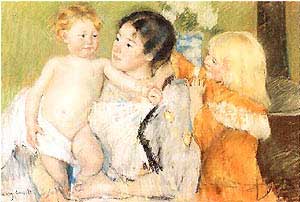39d. Victorian Values in a New Age

Victorian values dominated American social life for much of the 19th century. The notion of separate spheres of life for men and women was commonplace. The male sphere included wage work and politics, while the female sphere involved childrearing and domestic work.
Industrialization and urbanization brought new challenges to Victorian values. Men grew weary of toiling tireless hours and yearned for the blossoming leisure opportunities of the age. Women were becoming more educated, but upon graduation found themselves shut out of many professions. Immigrants had never been socialized in the Victorian mindset. As the century drew to a close, a revolt was indeed brewing.
Victoria Battles the Victorians
At the vanguard of revolt were the young, single, middle-class women who worked in the cities. Attitudes toward sex were loosening in private, yet few were brave enough to discuss the changes publicly.
One exception was Victoria Woodhull. In 1871, she declared the right to love the person of her choice as inalienable. Indeed, she professed the right to free love. She and her sister, Tennessee Claflin, published their beliefs in the periodical Woodhull and Claflin's Weekly.
A devout feminist, Woodhull protested the male hold on politics by running for President in 1872. She became the first female American to do so in a time when women did not even enjoy the right to vote.
The Comstock Law
As energetic as the rebellion may have been, the reaction was equally as forceful. Criticizing the evils of modern urban life — prostitution, gambling, promiscuity, and alcohol — Victorians fought to maintain the values they held dear.
Anthony Comstock lobbied Congress to pass the notorious Comstock Law banning all mailings of materials of a sexual nature. As a special agent for the United States Postal Service, Comstock confiscated thousands of books and pictures he deemed objectionable. Over 3,000 arrests were made for violations of the Comstock Law.
However valiantly Victorians fought to maintain their view of morality, they could not stop the changes. A greater acceptance of sexual expression naturally followed — especially in the new American city. For example, regions such as the Bowery in New York were known by city dwellers as areas where homosexuals found community.
America was evolving, and no one could bottle up that change. The public struggle between Victoria Woodhull and Anthony Comstock merely illustrated the underlying tensions between old and new values.






